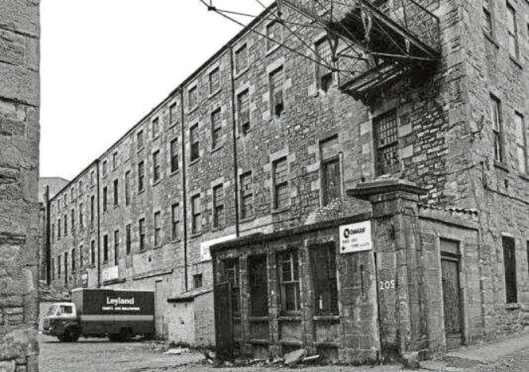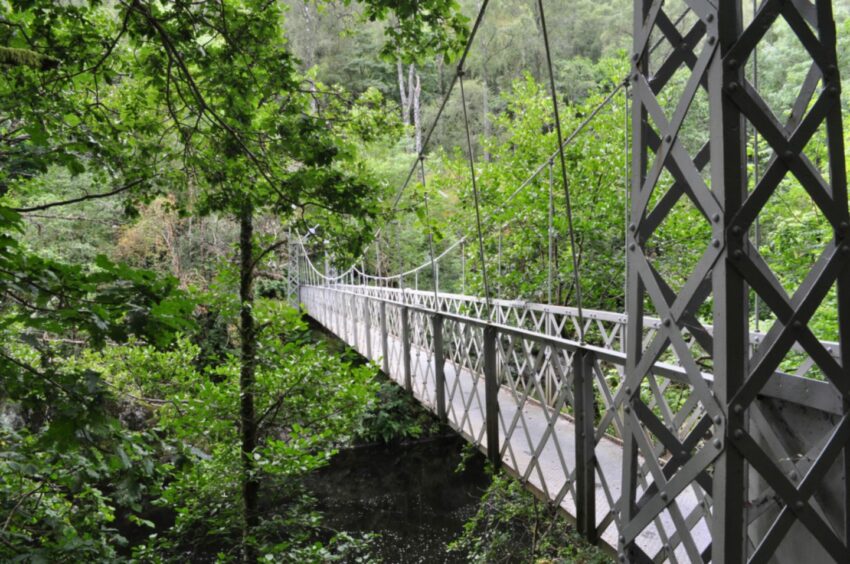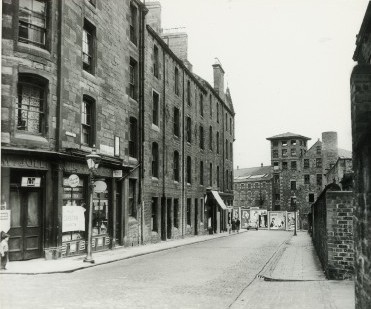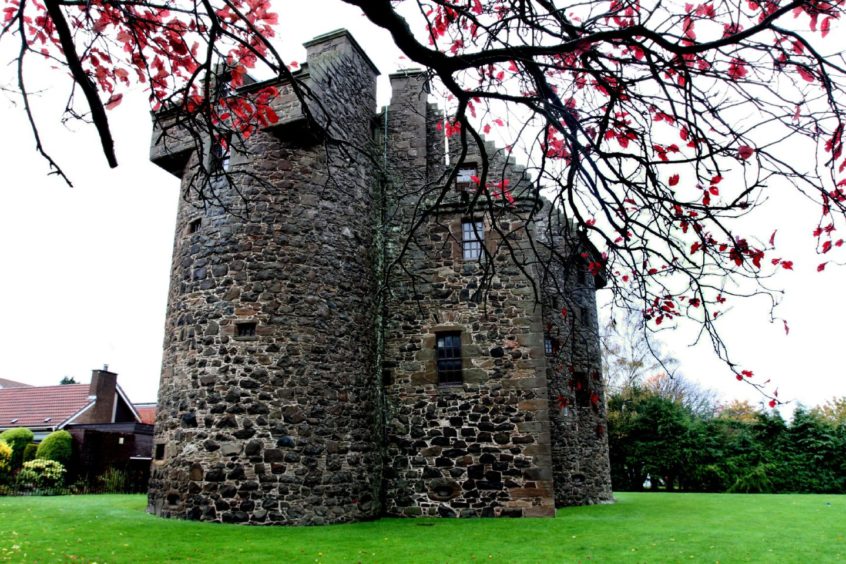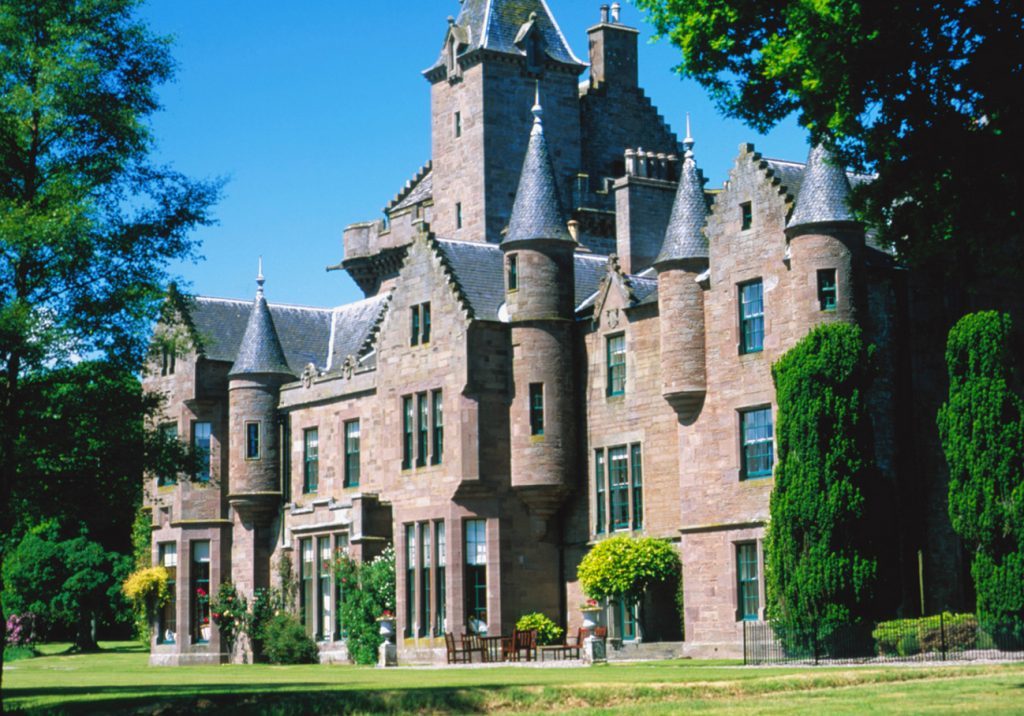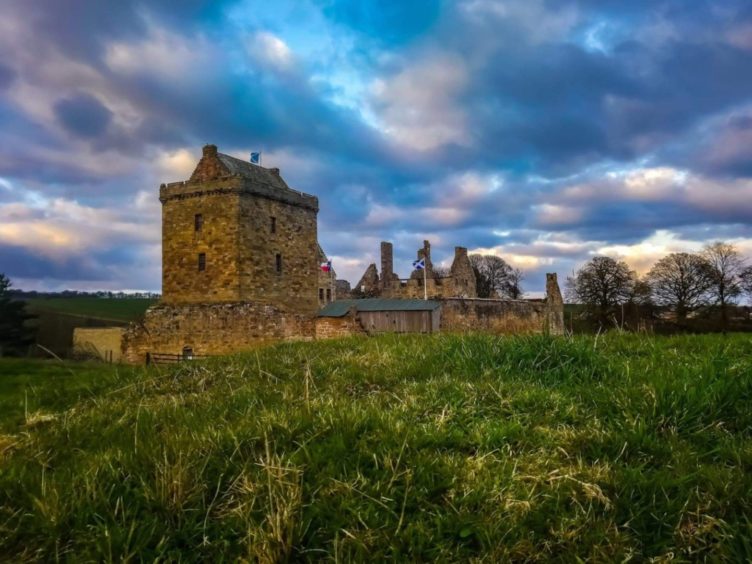Why is Scotland so haunted? That is the question that has intrigued Fife’s very own award-winning ‘ghostbuster’ team since they set up shop in West Wemyss in 2018.
Scottish Paranormal, comprised of Ryan O’Neill, Greg Stewart, Ally Reid and Kyle Stewart, has over two decades of experience in paranormal investigations and created the Paranormal Research Centre in a former shop three years ago, giving those interested in all things spooky a physical space to meet.
In 2020 the group was awarded Silver for the best Ghost Hunting Series (Facebook) in the annual Higgypop Paranormal Entertainment Awards and team members have appeared on TV shows including Brew Dogs, Help! My House Is Haunted, Most Haunted and Tough Gig.
Haunted Tayside
This Halloween, the team has put together a list of the most haunted locations in Tayside and Fife so that readers too can experience Scotland’s eerie vibes. Greg and Ryan talk us through the spooky secrets and dark history of each site.
“Where we find deep history, we’re sure to find mystery,” Ryan says. “Clans, battles, betrayal and royal family feuds, as many try to capture the heart of Scotland for themselves. Raw emotion, fear and death, etched onto the very fabric of the land. Ancient earth energies, emotional energetic imprints, or wandering spirits may still walk these lands.”
The Pass of Killiecrankie, Perthshire
On July 27, 1689, a Royalist army of around 3,000 infantry and 1,000 cavalry marched into the Pass of Killiecrankie, a wooded gorge through which the River Garry passes. Unknown to them, a Jacobite army watched, and as they marched through the gorge a single shot rang out, killing one of the cavalry. The Royalist forces quickly moved to open land where they could regather, only to find themselves facing the Jacobite army to the north.
After a tense stand-off the Jacobites charged, with many being slaughtered by Royalist fire as they did so. However, once the two armies met, the Jacobites’ superiority in hand-to-hand combat shone through, and the Royalist forces began to retreat and flee. When the battle was over, around 600 Jacobites and 2,000 Royalists lay dead.
Claims of hauntings in this area are documented as far back as the 1800s, with reports of carriages crossing the battlefield finding themselves being pursued by dark, undefined masses. Drivers passing the battlefield on the A9 report seeing a red glow above the battlefield at night, and there have been claims by walkers that while resting there, they briefly fell asleep only to awake to find themselves surrounded by fallen soldiers, before they snap back to current times.
The White Lady of Coffin Mill, Dundee
Originally built in 1828, the Logie Works in Dundee was extended several times over the years to become one of the biggest Jute mills in the city. To fit into the tight site it was built on, it also took an unusual shape, which some felt resembled a coffin and gave it the nickname The Coffin Mill.
Working conditions were not a top priority, resulting in many of the employees being badly injured or even killed as they operated the machinery. It is perhaps not surprising to hear that many of these old buildings are said to be haunted.
A white lady has been said to have been seen crossing an iron bridge connecting two of the buildings for many years in early September. There are several theories as to who she is. Some claim she is the phantom of an employee who was dragged to her death in the loom in 1875, while others say she was not killed during the accident, but was severely injured and, as she ran for help, she fell from the bridge. Another version is that she became pregnant and was told by her employer to lose the baby or lose her job. Distraught, she jumped from the bridge to her death.
The ghost caught the imagination of the people of Dundee and on September 4, 1945, so sure that she would appear, hundreds of people gathered outside the mill in the hope of catching a glimpse. The police eventually dispersed the crowds, but they returned later that night, only leaving after a police officer and night watchman walked through the entire building, shining their torches from the windows as they went, to show that there was no phantom in the building.
The Manse in Kirkmichael, Perthshire
Sitting on high ground overlooking Kirkmichael, you will find the Manse. Constructed around 1760, the current building incorporates part of a much earlier building, dating back to the 14th Century. It is however thought that a structure has sat on the land for more than 1,200 years and this, along with the natural spring that is said to provide water with healing properties, give an indication as to the origin of the haunting.
The surrounding area was once home to a Druid temple, with writings as late as 1807 recording that large parts of the temple still existed, along with a massive burial cairn. A number of smaller cairns were also said to remain. Records from 1899 still reported that, although long gone, a stone circle stood where the manse was later built.
The ghost of a tall, bearded man wearing a hooded robe is said to still wander the area, striking fear into all who see him. The spectre is also said to make ear-curdling screams which can be heard all around. Many believe him to be the phantom of a Druid priest, and that what we interpret as screams today is in fact a long forgotten chant from ancient times.
Claypotts Castle, Dundee
Claypotts Castle remains almost completely unaltered since it was constructed between 1569 and 1588. It was originally built for the Strachan family and then its ownership passed through a number of distinguished families, including John Graham of Claverhouse, the 1st Viscount Dundee who was loyal to the Jacobite rising.
The castle is currently maintained by Historic Scotland.
The ghost of a woman in white is said to have been witnessed at the castle on many occasions, always standing and looking out of one of the top floor windows and sometimes said to appear to be waving a handkerchief.
She only appears on May 29, which has led to the belief that she is Marion Ogilvie who was Cardinal Beaton’s mistress. Beaton was murdered on May 29, and this seems to be the only connection. However, Beaton was murdered in 1546, some 42 years before Claypotts Castle was completed, leaving her identity a mystery.
Guthrie Castle, Angus
Like so many Scottish Castles, Guthrie Castle started as a tower house. It was built in 1468 for Sir David Guthrie, the Lord Chief Justice of Scotland. The Guthrie family had a mansion house built next to the tower house around 1760 and in 1848 the mansion house was extended to join it to the tower, and an attic storey and battlements were added.
The castle was bought by American businessman Daniel Pena in the early 1980s and extensively restored. The property remained Mr Pena’s home for around 20 years and is now used as a wedding venue and for private rented accommodation.
The castle is said to be haunted by the benign spirit of a former Lady Guthrie. She first appeared in 1620, when the Bishop of St Andrews was staying at the castle.
The ghost is said to have appeared to the bishop one night in his bedchamber to ensure that he was comfortable. Since then, she has been seen by some of those who sleep in that room, always wanting to make sure they are looked after.
It is said many people report having the best night’s sleep they have ever had there.
Balgonie Castle, Fife
Balgonie Castle, located just outside Glenrothes, is ranked 17th in a list of the UK’s ‘most haunted’ places. It is said to be home to a number of unusual spirits including a dog, a hooded figure, an elderly man and a 17th-Century soldier.
Visitors have also reported odd experiences such as the sound of mysterious voices, the sight of floating heads and the feeling that you are being watched.
However the best-known spirit there is the famous Green Lady ghost, who can apparently still be seen roaming around the building.
The castle was built in the 14th Century by the Sibbald family but later fell into the hands of Sir Robert Lundie.
It is believed the Green Lady, or Green Jeanie as she is also known, could be one of the Lundie family.
